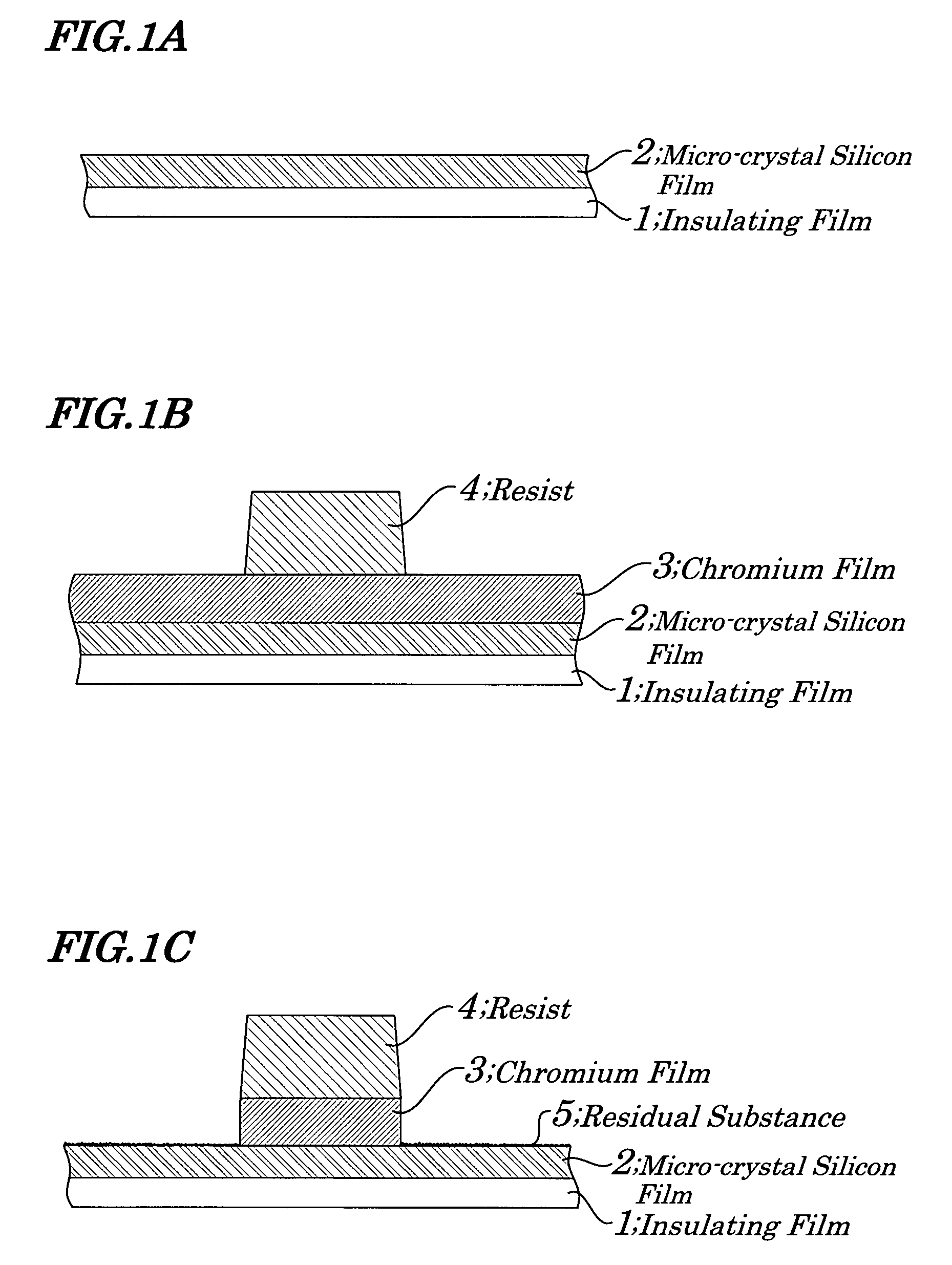Stacked film patterning method and gate electrode forming method
a gate electrode and film patterning technology, applied in the direction of basic electric elements, electrical equipment, semiconductor devices, etc., can solve the problems of affecting the uniformity of etching, and affecting the smooth etching progress, etc., to achieve high throughput, improve etching, and high anisotropy
- Summary
- Abstract
- Description
- Claims
- Application Information
AI Technical Summary
Benefits of technology
Problems solved by technology
Method used
Image
Examples
first embodiment
[0066]FIGS. 1A to 1C are process diagrams explaining a stacked film patterning method of the first embodiment of the present invention. FIGS. 2A to 2C are also process diagrams explaining the stacked film patterning method of the first embodiment. FIG. 3 is a diagram schematically showing configurations of a dry-etching apparatus to be used to perform the stacked film patterning method of the first embodiment. The stacked film patterning method of the first embodiment is used to form an electrode layer 6 which is a stacked film having a two-layer structure in which a metal film is stacked on a silicon film deposited on an insulating film 1 formed on a substrate (see FIG. 2C).
[0067]First, as shown in FIG. 1A, an n-type micro-crystal silicon film 2 including phosphorus as an impurity is deposited as a silicon film so as to have a film thickness of about 100 nm by a PECVD (Plasma Enhanced Chemical Vapor Deposition) method on the insulating film 1 made of silicon dioxide formed on a sub...
second embodiment
[0080]FIGS. 4A to 4C are diagrams explaining a stacked film patterning method according to the second embodiment of the present invention. The method of the second embodiment differs greatly from that of the first embodiment in that wet etching is performed to a mid point of a thickness of a chromium film (so as to reach a specified depth of the film). Configurations other than above are the same in the first embodiment and same reference numbers are assigned to components having the same function as in the first embodiment and their descriptions are simply made in FIGS. 4A to 4C accordingly.
[0081]First, as shown in FIG. 4A, a micro-crystal silicon film 2 as a silicon film is formed so as to have its film thickness of about 100 nm on an insulating film 1 made of silicon dioxide or a like. Next, a chromium film 3 as a metal film is deposited so as to have its film thickness of about 200 nm.
[0082]Then, the chromium film 3 is wet etched using a resist as a mask and using an ammonium ce...
third embodiment
[0088]FIGS. 5A, 5B, and 5C and FIGS. 6A, 6B, and 6C are process diagrams explaining a method of manufacturing polycrystalline TFTs according to the third embodiment of the present invention. The method of the third embodiment is a method for manufacturing a gate electrode making up a polycrystalline silicon TFT in which the stacked film patterning method provided in the first and second embodiments is used. As a gate electrode layer, two-layer stacked film made up of a metal film deposited on a silicon film is formed on a gate insulating film by patterning and, as a semiconductor layer, polycrystalline silicon (p-Si) is used.
[0089]First, as shown in FIG. 5A, in order to prevent contamination caused by metal or a like on a glass substrate 21, a front-end insulating film 22 made of silicon dioxide or silicon nitride with its film thickness of about 300 nm is deposited on the glass substrate 21 by a plasma CVD or reduced pressure CVD. Next, an amorphous silicon (a-Si) film 23 is deposi...
PUM
 Login to View More
Login to View More Abstract
Description
Claims
Application Information
 Login to View More
Login to View More - R&D
- Intellectual Property
- Life Sciences
- Materials
- Tech Scout
- Unparalleled Data Quality
- Higher Quality Content
- 60% Fewer Hallucinations
Browse by: Latest US Patents, China's latest patents, Technical Efficacy Thesaurus, Application Domain, Technology Topic, Popular Technical Reports.
© 2025 PatSnap. All rights reserved.Legal|Privacy policy|Modern Slavery Act Transparency Statement|Sitemap|About US| Contact US: help@patsnap.com



